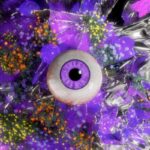Since antagonists do not receive near as much narrative focus as the heroes of the story, it's common for many details aboutt hem get left on the cutting room floor. Were it not for the art books, some of the juiciest details about Avatar: The Last Airbender and The Legend of Korra's best antagonists may never have seen the light of day.
To fully appreciate just how much designs can change over time an Avatar fan need look no further than the original designs of Zuko as seen in Avatar: The Last Airbender - The Art of the Animated Series by series creators Bryan Konietzko and Michael DiMartino. His originaly costume was inspired by samurai armor, but as Zuko's characterization came into focus and it became clear he was not going to remain a villain, the design lost much of the hard edge. In addition to shifting understandings of the characters, the designs also needed simplifying in order to streamline the animation. Notably in the Season 1 finale, Sokka made note of old "outdated" Fire Nation uniforms bearing a striking resemblance to Zuko's early design.
The sequel The Legend of Korra proved much more ambitious with its willingness to create whole new threats for the heroes with every season. Combined with a full supporting cast there were a lot of moving parts and different character arcs to balance, and while many fans loved the diversity and depth of story telling the move brought it had the side effect of many villain's details lingering in the sequel series other art books by Bryan Konietzko and Michael DiMartino, such as Amon's feature in The Legend of Korra: The Art of the Animated Series Book One - Air.
Of particular note is the blend of different cultures' color schemes in the design of Amon's propaganda. Given the Equalists identified with no one culture over any other they freely blended the reds of the Fire Nation with the greens of the Earth Kingdom in a subtle touch easy to miss. A more character-grounded detail contained in the Art of the Animated Series Book 3 - Change revealed that Ming Hua's armlessness was congenital rather than an amputation, but the series just didn't have time to delve into her backstory.
Of particular note are many details surrounding the Book 4 villain, Kuvira, whose design seen in The Legend of Korra: The Art of the Animated Series - Book Four: Balance also simplified over time along with her story. What's truly great bout the art books insight into her come in revealing more about details already present, such as the intricate design of the thin metal sheets on her armor designed to retain cover even while providing the Metalbender with ammunition. In her duel with Suyin, Kuvira quickly turns her gauntlet into a sword that shifts into a whip, and the art book details how the total mass of Kuvira's armor remained constant throughout the sequence.
More detail also fleshes out Kuvira's character, with designers comparing her to Muhammad Ali in her first duel with Korra when the Great Uniter deliberately toyed around with the Avatar in order to best make an example of her. While much of her cocky attitude was present in her body language, such descriptions make their inspiration and intent even more apparent.
Kuvira is also referred to in the artbook as a "bending heavyweight" and physically comparable to Korra, putting to rest any doubts that Kuvira somehow went up against a Korra anywhere but her best in their final fight. With many designs, ideas,and explicit statements confined to the art books, one wonders how including such dropped concepts in the show itself may have shaped the final product.


